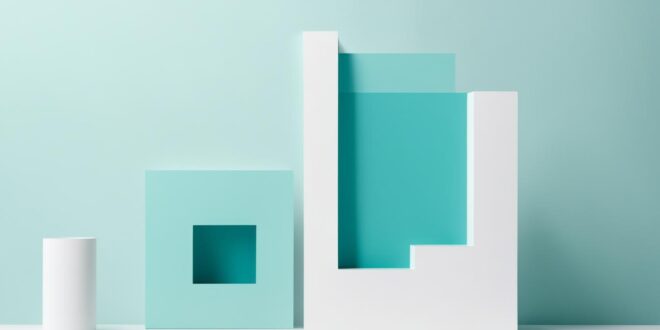Minimalism is more than just a lifestyle trend or a design aesthetic. It is a philosophy that invites individuals to rethink their relationship with possessions, time, and priorities. Understanding minimalism goes beyond decluttering physical spaces; it involves embracing simplicity and intentionally choosing what adds value and meaning to our lives.
At its core, the philosophy of minimalism encourages individuals to focus on what truly matters and remove distractions that prevent us from living a meaningful life. By prioritizing experiences over material possessions, we can create space for personal growth, self-reflection, and overall well-being.
By understanding the principles of minimalism and adopting a minimalist lifestyle, we can simplify our lives, reduce stress, and gain a greater sense of clarity and purpose. It is about making intentional choices that align with our values and creating a life that is centered around what truly brings us joy and fulfillment.
In this article, we will delve deeper into the philosophy of minimalism, explore its origins and principles, and discuss its benefits and practical application in different areas of life. Whether you’re new to minimalism or looking to deepen your understanding, join us on this journey of embracing simplicity and finding balance in the modern world.
The Definition and Misconceptions of Minimalism
Minimalism is often defined as the intentional promotion of things that bring joy and the removal of those that do not. It is not about deprivation or sacrifice, but rather about embracing quality over quantity and making mindful choices. Contrary to common misconceptions, minimalism does not mean owning as little as possible or having a specific number of possessions. It is about curating belongings to reflect one’s priorities and vision for their life.
By understanding the true definition of minimalism and dispelling misconceptions, individuals can approach minimalism with a clearer perspective.
The History and Origins of Minimalism
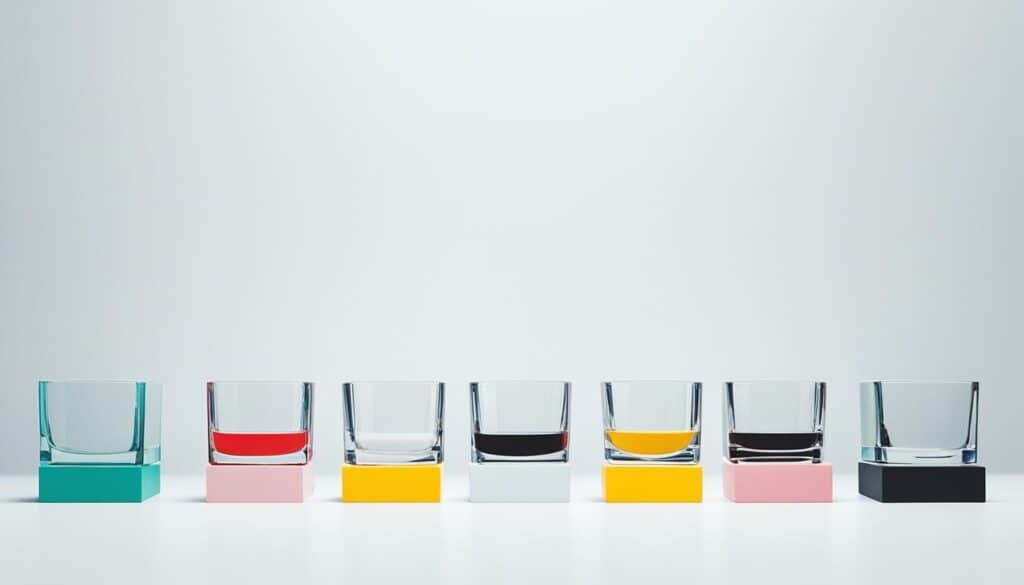
The Minimalism movement can be traced back to the mid-20th century when artists began favoring simplicity and geometric shapes in their work. It gained popularity in the 1960s and 1970s, becoming a prominent trend in art, architecture, design, and lifestyle.
The development of minimalism was influenced by factors such as the aftermath of World War II, the rise of consumerism, and the availability of new materials. Artists sought to strip away unnecessary ornamentation and focus on essential forms and elements.
Minimalism emerged as a response to the excesses of consumer culture, advocating for a more streamlined and intentional way of living. It represented a shift towards simplicity, utility, and elegance in various aspects of life.
Over time, minimalism evolved into a global phenomenon, permeating various disciplines. Its influence can be seen in architecture, where clean lines and open spaces dominate, and in design, where functionality and aesthetics merge harmoniously.
The origins of minimalism can be found in the works of artists such as Frank Stella, Donald Judd, and Dan Flavin, who rejected traditional artistic conventions and embraced minimalistic principles.
Today, minimalism continues to resonate with individuals seeking a simpler, more meaningful existence. Its impact extends beyond the artistic realm to encompass lifestyle choices, personal philosophies, and environmental sustainability.
The Principles and Philosophy of Minimalism

The philosophy of minimalism is centered around embracing the principles of simplicity, intentionality, and conscious decision-making. Minimalists prioritize experiences over material possessions and focus on what is essential in their lives. By adopting a minimalist lifestyle, individuals strive to achieve personal harmony and value quality over quantity in all aspects of life.
One of the key principles of minimalism is making mindful choices about belongings. Minimalists carefully consider what they own and ensure that each item adds value and meaning to their life. They embrace the idea that less is more and seek to eliminate unnecessary clutter and distractions.
Time and energy are also important considerations for minimalists. They understand the value of their time and prioritize activities and relationships that align with their core values. By consciously allocating their time and energy to what truly matters, minimalists create a sense of balance and fulfillment in their lives.
The philosophy of minimalism promotes the rejection of superficial mass consumerism. Rather than striving for an accumulation of material possessions, minimalists focus on the quality and purpose behind each item. They prioritize sustainable and ethical choices, supporting brands and products that align with their values.
Minimalism is not about adhering to a strict rulebook, but rather adopting a mindset that fosters conscious living. It encourages individuals to reflect and evaluate their beliefs, aligning their actions with their values. By understanding the principles and philosophy of minimalism, individuals can adopt a minimalist lifestyle that brings them joy, fulfillment, and a greater sense of personal alignment.
Minimalism and Scandinavian Design
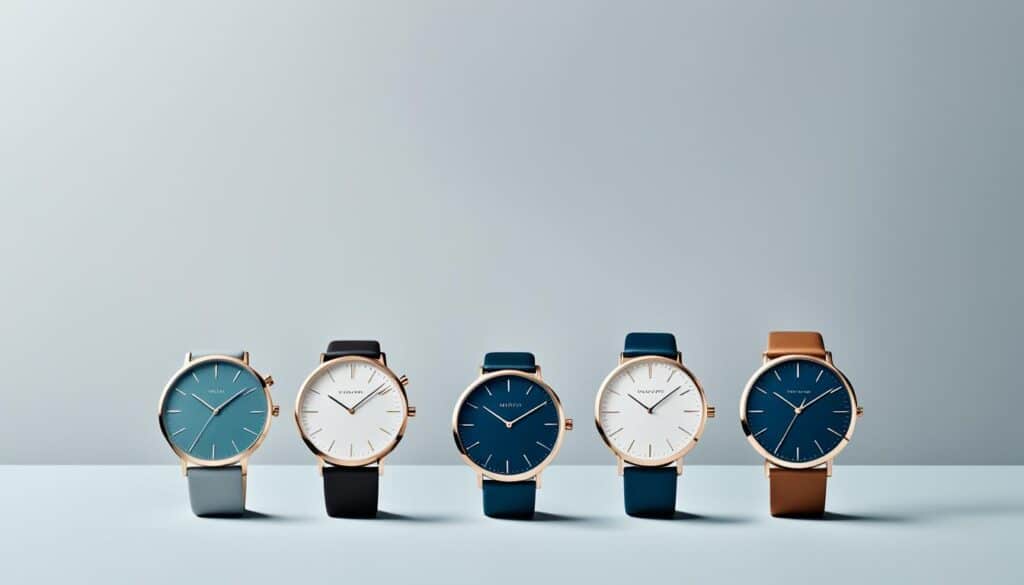
Scandinavian design is often associated with minimalism due to its emphasis on simplicity, functionality, and clean lines. The Scandinavian minimalist aesthetic incorporates organic materials, natural colors, and a focus on light and form.
Danish design, in particular, has a rich tradition of minimalism shaped by post-war economic hardships and the need for comfortable, efficient living spaces. This minimalist approach to design prioritizes functionality and practicality while maintaining an elegant and timeless aesthetic.
Scandinavian minimalist design can be observed in various areas, including architecture, product design, and interior design. With a focus on clean lines, open spaces, and an abundance of natural light, Scandinavian-inspired interiors exude a sense of calmness and tranquility.
One example of minimalist design influenced by Scandinavian aesthetics is minimalist watches. Companies like LARSEN & ERIKSEN create timepieces that embody the essence of Scandinavian design philosophy. These watches feature clean dials, understated details, and high-quality materials, incorporating the minimalism and functionality that are synonymous with Scandinavian design.
Image: Minimalist watch embodying the Scandinavian design philosophy.
By combining the principles of minimalism with the unique characteristics of Scandinavian design, these watches enhance the wearer’s style with simplicity, elegance, and functionality.
The Benefits of Minimalism

Adopting a minimalist lifestyle has numerous benefits. By simplifying your life and embracing minimalism, you can experience a greater sense of clarity, focus, and inner peace. One of the key advantages of minimalism is the ability to remove clutter from your surroundings. This not only reduces visual distractions but also helps alleviate stress and improve overall well-being.
Minimalism promotes conscious consumption and encourages individuals to prioritize experiences and relationships over material possessions. By focusing on what truly matters, you can foster deeper connections with others and create a more fulfilling life. With fewer distractions and a clearer sense of purpose, you can also increase your productivity and achieve a greater sense of balance in your daily activities.
Furthermore, minimalism can have a positive impact on your financial well-being. By practicing intentional consumption and eliminating unnecessary expenses, you can achieve financial freedom and reduce the burden of debt. Minimalism also encourages individuals to consider the environmental implications of their choices, leading to a smaller ecological footprint and a more sustainable lifestyle.
In summary, embracing a minimalist lifestyle offers a multitude of advantages. It can enhance your mental well-being, increase your focus and productivity, strengthen your relationships, and promote financial and environmental sustainability. Understanding the benefits of minimalism can inspire you to adopt this lifestyle and create a more intentional, fulfilling, and balanced life.
Applying Minimalism to Different Areas of Life
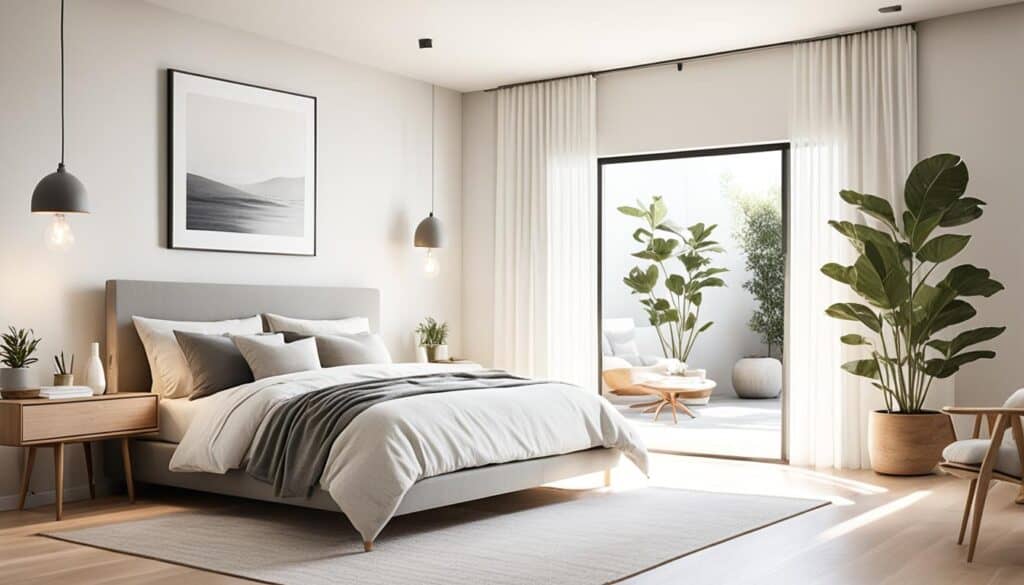
Minimalism is not limited to just decluttering physical possessions; it can be applied to various areas of life to create a more intentional and fulfilling lifestyle.
Minimalism at Home
Applying minimalism at home involves decluttering, organizing, and creating a space that promotes peace and tranquility. By simplifying one’s living environment and focusing on the essentials, individuals can eliminate distractions and create a serene sanctuary. Minimalist home decor emphasizes clean lines, neutral colors, and functional furniture. Adopting minimalist storage solutions and keeping only what is truly necessary can help maintain an organized and clutter-free home.
Minimalism at Work
In the workplace, minimalism encourages individuals to prioritize meaningful work and eliminate distractions. By decluttering physical and digital workspaces, individuals can create an environment that promotes focus and productivity. Minimalism at work involves streamlining tasks and responsibilities, eliminating non-essential commitments, and adopting efficient workflows. By simplifying their work lives, individuals can reduce stress, enhance productivity, and find more fulfillment in their professional endeavors.
Minimalism in Relationships
Minimalism can also be applied to relationships by focusing on quality over quantity and surrounding oneself with like-minded individuals. Minimalists prioritize meaningful connections and strive for authentic relationships. By letting go of toxic relationships and surrounding themselves with positive influences, individuals can create a supportive and fulfilling social circle. Minimalism in relationships involves setting healthy boundaries, practicing open communication, and investing time and energy in those who add value to one’s life.
Minimalism in Personal Habits
Minimalism extends to personal habits by promoting intentional choices, mindfulness, and self-reflection. Minimalists focus on aligning their actions and beliefs and eliminating habits that do not serve their well-being. By adopting minimalist practices such as mindful eating, digital detoxing, and practicing gratitude, individuals can cultivate a more intentional and fulfilling life. Minimalism in personal habits encourages individuals to prioritize self-care, embrace simplicity, and make conscious choices that align with their values.
By applying minimalism to different areas of life, individuals can create a more intentional and fulfilling lifestyle, free from distractions and clutter. Whether it’s at home, work, relationships, or personal habits, embracing minimalism can lead to greater clarity, peace, and contentment.
Overcoming Challenges in Minimalism

While minimalism offers numerous benefits, it is not without its challenges. One of the main hurdles is resisting the pull of consumerism and societal pressure to accumulate more. In a world that constantly promotes material possessions, adopting a minimalist lifestyle requires a conscious effort to reject the norms of mass consumerism.
Letting go of sentimental items can also prove to be emotionally challenging. Sentimental attachments to objects often hinder the process of decluttering, making it difficult to embrace minimalism fully. However, recognizing that memories reside within us and not in material possessions can help in breaking free from attachment and embracing a clutter-free lifestyle.
Maintaining a minimalist lifestyle also demands consistent effort and mindfulness. It is not a one-time decluttering process but a continuous journey of reassessment and simplification. This requires staying true to one’s values, practicing gratitude for what one already has, and continuously reevaluating priorities.
Overcoming the challenges of minimalism involves intentional decision-making and consciously aligning actions with personal values. It requires discipline and the willingness to let go of societal expectations. By acknowledging and addressing these challenges, individuals can navigate the path of minimalism effectively and fully embrace its benefits.
The Drawbacks of Minimalism:
- Resisting the pull of consumerism
- Emotionally challenging to let go of sentimental items
- Consistent effort and mindfulness required
By acknowledging and addressing the challenges of minimalism, individuals can navigate them effectively and fully embrace the minimalist lifestyle.
The Connection Between Minimalism and Sustainability

Minimalism and sustainability go hand in hand, as both concepts share a focus on making conscious choices that minimize environmental impact. By embracing minimalism, individuals can reduce their carbon footprint and contribute to a more sustainable future.
One of the key aspects of minimalism is conscious consumption. By owning fewer possessions and prioritizing quality over quantity, minimalists actively work to reduce waste and minimize their environmental footprint. They carefully consider the environmental impact of their choices, opting for eco-friendly materials and supporting ethical brands that align with their values.
Second-hand and upcycled items are also favored by minimalists as they promote resourcefulness and reduce the demand for new products. This approach minimizes the use of raw materials and energy needed for manufacturing, thereby helping to conserve natural resources.
The connection between minimalism and sustainability underscores the importance of living in harmony with the environment. By adopting a minimalist lifestyle, individuals can take responsibility for their actions and actively contribute to creating a more sustainable world.
Real-Life Examples of Minimalism

Minimalism is not just a theoretical concept; it is a practical and actionable approach to living a more intentional and fulfilling life. Let’s explore some inspiring real-life examples of individuals who have embraced minimalism and witnessed transformative changes in various aspects of their lives.
1. Decluttering the Home
One common practice among minimalists is decluttering and simplifying their living spaces. By letting go of unnecessary possessions and organizing their belongings, individuals can create a calm and clutter-free environment. This minimalist lifestyle choice not only promotes a sense of peace but also makes it easier to focus on what truly matters.
2. Downsizing and Minimalist Wardrobe
Some minimalists take the concept of simplicity a step further by downsizing their living spaces and adopting a minimalist wardrobe. By living in smaller spaces and having a curated wardrobe consisting of essential and versatile pieces, these individuals reduce excess and focus on the quality and utility of their belongings.
3. Minimalism in Digital Lives
With the rise of technology, minimalists have embraced the practice of simplifying their digital lives as well. This includes minimizing screen time, decluttering digital files and emails, and being intentional about the apps and devices they use. By implementing digital minimalism, individuals can reduce distractions and create a healthier relationship with technology.
4. Simplifying Work Schedules
Minimalism extends to work life as well, with many individuals opting for simplified work schedules. By focusing on essential tasks, prioritizing work-life balance, and eliminating unnecessary commitments, minimalists can experience greater productivity, reduced stress, and a better integration of work and personal life.
5. Minimalism and Mindful Consumption
Minimalists often prioritize mindful consumption, making intentional choices about the items they bring into their lives. This means considering the environmental impact, supporting ethical brands, and valuing quality over quantity. By being mindful of their consumption habits, minimalists can contribute to a more sustainable and conscious way of living.
These real-life examples of minimalism demonstrate the versatility and adaptability of this lifestyle. By embracing minimalism in different areas of life, individuals can experience greater peace, focus, and fulfillment. Whether it’s through decluttering the home, simplifying work schedules, or adopting mindful consumption habits, the benefits of minimalism are tangible and transformative.
How to Embrace a Minimalist Lifestyle
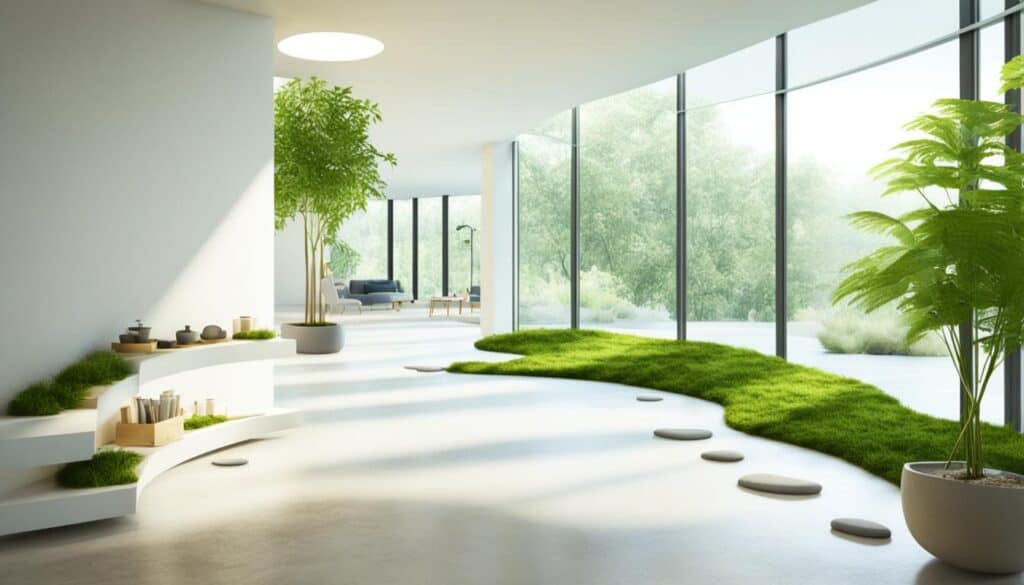
Embracing a minimalist lifestyle is a personal journey that requires reflection, intentionality, and commitment. By following these practical steps, you can gradually transition to a minimalist lifestyle and experience the benefits it offers:
- Declutter and Let Go: Start by decluttering your living space and letting go of unnecessary possessions. Remove items that no longer add value or significance to your life, creating physical and mental space for what truly matters.
- Intentional Consumption: Shift your focus to intentional consumption. Make thoughtful choices about the items you bring into your life, considering their usefulness, quality, and impact on your well-being and the environment.
- Practice Gratitude: Cultivate a mindset of gratitude by appreciating what you already have. Take time to acknowledge and cherish the things, experiences, and relationships that bring joy and fulfillment to your life.
- Establish Routines: Develop daily routines that support a minimalist lifestyle. Create structured habits for organizing your physical surroundings, managing your time effectively, and prioritizing self-care.
- Set Boundaries: Set clear boundaries in various aspects of your life. Establish boundaries for digital consumption, work-life balance, and personal relationships. Learn to say no to activities and commitments that don’t align with your minimalist values.
By incorporating these steps and adopting a mindful approach, individuals can gradually embrace minimalism and experience the positive impact it can have on their lives.
steps to embrace minimalism.
Minimalism and Personal Growth
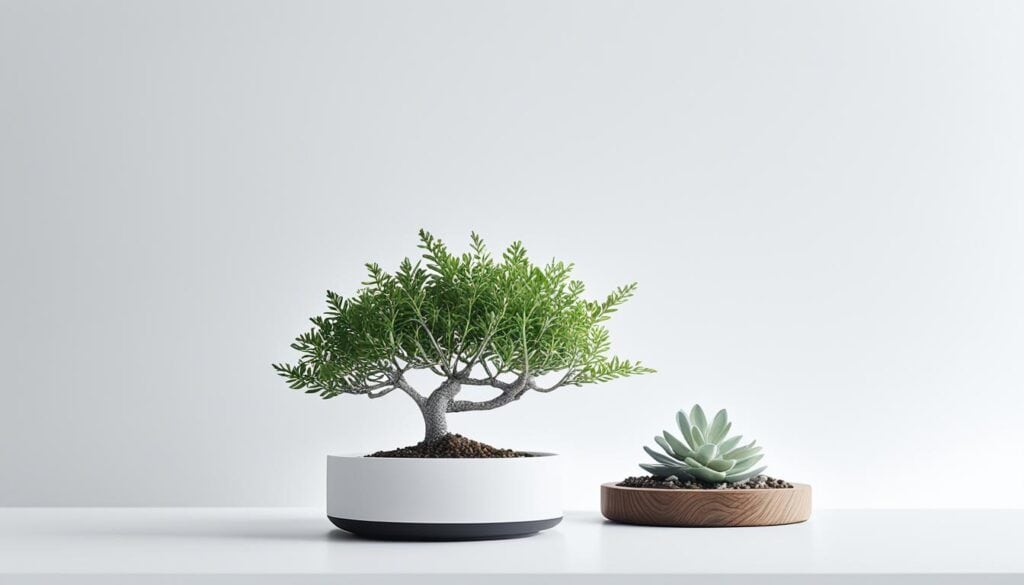
Minimalism is more than just decluttering physical possessions; it is a pathway to personal growth and self-improvement. By embracing minimalism and letting go of excess, individuals can cultivate self-awareness, clarity, and purpose in their lives. Minimalism encourages individuals to examine their beliefs, values, and priorities, leading to personal transformation and alignment with their true selves.
One of the key aspects of minimalism is mindfulness, the practice of being fully present and intentional in each moment. By embracing a minimalist mindset, individuals can develop a greater appreciation for the simple joys in life and find contentment in the present moment. This mindfulness extends to gratitude, as minimalism encourages individuals to appreciate and be thankful for what they have, rather than constantly striving for more.
Intentional Living and Personal Growth
Minimalism promotes intentional living, which involves making deliberate choices about how time, energy, and resources are allocated. By being intentional in their actions and decisions, individuals can create a life that aligns with their values and priorities. This intentional living leads to personal growth and a deeper understanding of oneself.
Through minimalism, individuals are able to shed the distractions and external pressures that often cloud personal growth. By focusing on what truly matters, they can devote their time and energy to activities and relationships that bring fulfillment and happiness. Minimalism encourages individuals to pursue their passions, nurture their talents, and invest in personal development.
The Minimalist Mindset and Self-Improvement
Adopting a minimalist mindset is a powerful tool for self-improvement. It requires individuals to critically assess their possessions, relationships, and habits, and make intentional choices that serve their personal growth. By eliminating distractions and reducing clutter, individuals can create a mental and physical space for self-reflection, self-care, and personal development.
The minimalist mindset fosters a continuous journey of self-discovery and improvement. It encourages individuals to explore their values, embrace simplicity, and seek opportunities for growth and learning. By embracing minimalism, individuals can embark on a path of intentional living, personal growth, and holistic well-being.
In the image above, an individual is embracing the minimalist mindset by decluttering their workspace and creating a clean and organized environment. This environment promotes focus, clarity, and personal growth, aligning with the principles of minimalism and self-improvement discussed in this section.
Minimalism as a Tool for Creating Balance

In today’s fast-paced and busy world, finding balance can often feel like an elusive goal. However, minimalism provides a valuable tool for achieving harmony in life. By simplifying one’s life and eliminating unnecessary distractions, individuals can prioritize what truly matters and strike a balance between work, personal life, and self-care.
Minimalism encourages individuals to set boundaries, both in their professional and personal lives. By establishing clear boundaries, individuals can allocate time and energy to different aspects of their lives, ensuring that they don’t become overwhelmed or neglect important areas. This deliberate separation empowers individuals to focus on their priorities and make intentional choices.
One of the key principles of minimalism is the practice of self-compassion. By recognizing the importance of self-care, individuals can create space for rest, rejuvenation, and personal growth. Embracing minimalism allows individuals to let go of the constant pressure to achieve more and instead find contentment and peace in the present moment.
Integrating minimalism into one’s lifestyle provides a counterbalance to the modern culture of constant busyness and striving for more. It encourages individuals to focus on cultivating a sense of balance and well-being, rather than succumbing to the trap of always wanting more. By intentionally simplifying and decluttering their lives, individuals can achieve a more intentional and fulfilling existence.
By adopting a minimalist mindset and embracing the principles of minimalism, individuals can create a sense of balance that allows them to thrive in all aspects of life. Minimalism offers a framework for making conscious choices that align with personal values and priorities, contributing to overall happiness and well-being.
Conclusion
Minimalism is a philosophy and lifestyle practice that embraces simplicity, intentionality, and conscious decision-making. By prioritizing what truly matters and removing distractions, individuals can experience reduced stress, increased clarity, and a greater sense of fulfillment. The principles of minimalism can be applied to various areas of life, allowing individuals to create a customized minimalist lifestyle that aligns with their preferences and needs.
While minimalism may present challenges, such as resisting consumerism and letting go of attachments, overcoming these obstacles can lead to personal growth and a more intentional and fulfilling life. By adopting a minimalist mindset and embracing the principles of minimalism, individuals can curate a life that is centered around what truly matters, finding balance, peace, and joy.
In summary, minimalism is a powerful philosophy that encourages individuals to live with less, make intentional choices, and create space for what truly matters. By embracing minimalism, individuals can experience the numerous benefits it offers and find a deeper sense of fulfillment in their lives. So, why not embark on a minimalist journey and discover the transformative power of living with purpose and intention?
 Fullersears
Fullersears
